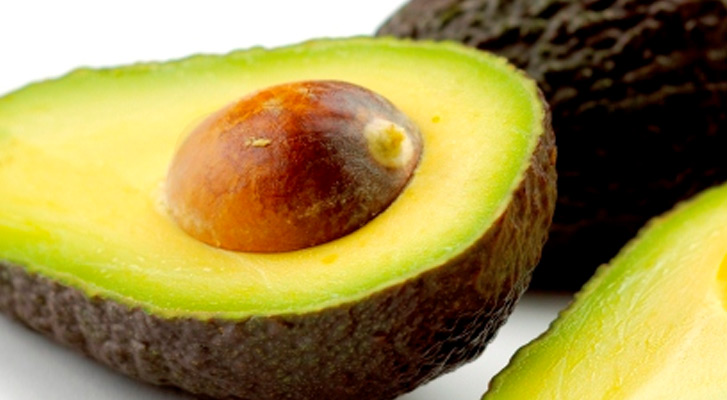Whether it’s low-carb, no-carb or slow-carb, Paleo, Atkins or Dukkan, to get in shape for summer you’ve most likely been sticking to a diet containing either low or no carbohydrates. Although carbohydrates actually help to speed up the recovery process by replenishing muscle glycogen (fuel) levels, if you’ve reached a cutting phase of your diet and are looking to shift bodyfat in time for a summer beach body, giving carbs a miss makes a lot of sense.
It’s widely known that cutting out carbs kicks your body into a state of ketosis. Ketosis happens when your liver becomes glycogen depleted and forms ketone bodies. At this point blood glucose levels are maintained by the generation of glucose from non-carbs, such as amino acids and fatty acids, and your body will begin to flood with the ketone bodies. Around 48 hours into this process your body will start burning ketones so that it can use the energy it needs from your fat stores, reserving glucose for only when absolutely necessary. This way your body ends up burning fat but avoiding burning up protein needed for muscle repair and growth.
While ketosis may not be for everyone, it provides an option for those who prefer to drop carbs and increase fats.
Am I in ketosis?
If you’ve cut back your carb intake and are wondering if you have reached ketosis, there are a few signs to look out for. Tiredness, a need to hydrate regularly, a dry mouth, ‘fruity’ smelling breath, a metallic taste in your mouth, cold hands and feet and problems sleeping are all symptoms which can indicate that your body is in ketosis – however not everyone will experience these as they tend to only display in people who have undergone a massive dietary change. If you regularly eat 50%+ carbs and then stop, these symptoms will occur for a day or two, but if you already have a low carb diet you probably won’t experience any signs.
Another symptom that affects the majority of low-carb or no-carb dieters is known as ‘Carb-Flu’ or ‘Keto-Flu’, which has been described as experiencing jet-lag type symptoms. This can occur around three days in and typically lasts around one to two days, although the worst case scenario is around the one week mark. You may experience low energy levels, fatigue and a ‘mental fog’. Although it can be a difficult period of time, ‘Carb-Flu’ is only temporary and is a sign that your body is having to work a little bit harder – making energy from carbs is simple but creating it from fats and protein is a more complicated procedure. Your body will eventually catch up and work efficiently on its new form of energy, but the adjustment period can be tricky for some. If you’re finding it hard to battle through your carb flu, once you ‘break’ it and are out the other side, many dieters say that they start to feel better than they did before and their energy levels increase.
The ‘mental fog’ is caused by making your brain process ketones instead of glucose. This may cause a temporary period of stress, but research has shown that long term, this is highly beneficial. Alzheimer’s is a disease related to insulin resistance, relating to glucose production. Our brains can fully function on ketones, fat-metabolism byproducts and key energy sources, all of which are being promoted as being healthier for our brains to run off of.
Staying in ketosis
You burn the most fat when you are consistently in ketosis, so it pays to stay in that state for a decent length of time. But staying in ketosis can be tricky, unless you are very strict about your carb intake. Eating no more than 50g of carbs per day is recommended, but some people may find that eating more than 30g kicks them out of ketosis. If you are strength training then you get a slightly bigger margin.
Lyle McDonald, author of The Ketogenic Diet, states that “For every 2 work sets (assuming a set length of 30-45 seconds) or so, you’ll need 5 grams of carbohydrates to replenish the glycogen used. So if you did a workout containing 24 work sets, you’d only need about 60 extra grams (24 sets * 5 grams/2 sets = 60 grams) of carbohydrate to replace the glycogen used.”
Because of the low carb intake, your body will be lacking in energy – so you need to up your fat intake so your body has something to burn off – otherwise you might burn out! We don’t mean ‘eat more fat, full stop’, but you should give yourself a day or two where your fat intake is slightly above average, otherwise you can find yourself lacking in energy and feeling too tired to continue working out. Slightly upping your fat intake after a cheat meal can be a helping hand to kick your body back into ketosis.
Drinking a large amount of water is essential, as ketogenic diets have diuretic effects on the body. Try BULK POWDERS™ Complete Hydration Drink™ to avoid dehydration. Your diet should exclude sugars and sweetened foods, all grains and corn products, processed meals, fizzy drinks, starchy vegetables, fruit juices, milk and fruit. By looking carefully at your macros you should easily be able to manage whether you transition your body into ketosis and how long you stay there for.
If you are on a low-carb diet this summer, whether you are struggling with low energy levels and resisting carbs, or fully in ketosis and feeling better than ever – let us know via Facebook or Twitter. We’d love to hear your experiences of low-carb diets and find out which one works best for you.
















